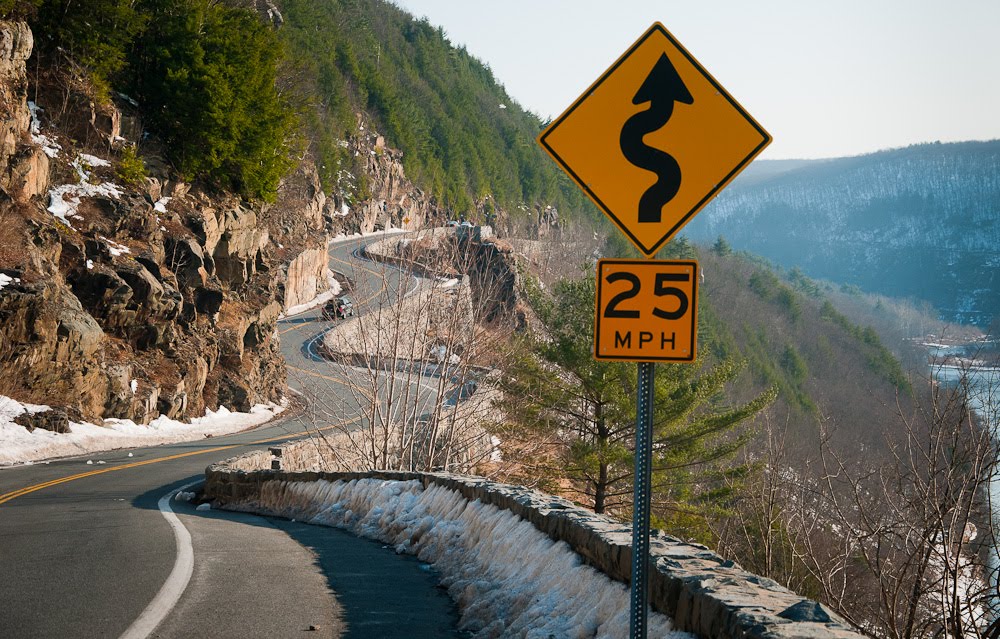New York Route 97 Scenic
Byway Committee
New York Scenic Byways
Program Fact Sheet

What is the New York State Scenic Byways Program?
The New York State Scenic Byways Program, established in 1992, was a legislative action that is now a State Highway Law under Article XII-C, Section 349. Under Section 349-aa Statement of Intent:
“The Legislature hereby finds that certain portions of the State Highway System are notable for their scenic, historic, recreational, cultural and archaeological value and worthy of designation as Scenic Byways to provide special consideration of their unique features and special role in the Highway System”
It is a locally-driven effort designed to bring attention to the roadway corridors in the state that have regionally significant scenic, natural, recreational, cultural, historic or archaeological resources. By bringing attention to these corridors, the program aims to convey to the traveler some of the state’s heritage, recreational opportunities, and scenic beauty. Section 349-bb New York State Scenic Byways Program states that
“For the purposes of this article, a “Scenic Byway” is a transportation route and adjacent areas of particular scenic, historic, recreational, cultural or archaeological characteristics which is managed to protect such characteristics and to encourage economic development through tourism and recreation.”
The pursuit of State Scenic Byway designation must come from local initiatives that gather support for the project and see the process through to the application. Roadways that are designated State Scenic Byways must have a Corridor Management Plan that guides development and promotion of the roadway corridor in a way that both protects the resources that make it special and encourages local economic development opportunities. The Corridor Management Plan is developed at the grassroots level. In seeking community input to develop the plan, it is expected that the resulting character of the Byway will echo the priorities and goals of the people who live along it.
Also, under Section 349-bb, Paragraph 2 (b), it states that the commissioner is authorized:
“to make safety improvements to a highway designated as a scenic byway under this article to the extent such improvements are necessary to accommodate increased traffic, and changes in the types of vehicles using the highway due to such designation.”
A letter from the New York State Department of Transportation) explains that “this authorization recognizes the potential for increased traffic (greater usage and visitation) that may follow designation as a scenic byway…..Should this be the case, this paragraph authorizes the Commissioner to make safety improvements to accommodate the type of vehicles already using the road.”
To assist the Department of Transportation in the operation of its Scenic Byways Program, the New York State Byways Advisory Board was established under Section 349-cc. It has a number of duties including the designation and removal of scenic byway routes.
What are the regulations associated with the Program?
There are no regulations associated with the New York State Scenic Byways Program. It is a voluntary decision by local municipalities to participate by nominating a route as a state scenic byway. The Federal Highway Beautification Act, 23 U.S.C.131, prohibits the construction of new billboards along designated scenic byways that are interstate, National Highway System or Federal-aid primary roads. However, Route 97 is NOT part of the National Highway System or a Federal-aid primary road and, therefore, there are no billboard controls imposed. Local communities, of course, can enact their own standards that may actually be stricter than the Federal regulations.
What does participation in the Program mean for local governments?
There are no requirements that municipalities enact any particular regulations under the scenic byway program or any provisions for state oversight of local regulations. Individual towns, nevertheless, may, on their own, choose to use their zoning and other land use regulations as a means of complementing the byway.
Participation in the State Scenic Byways program can have many benefits for local communities. Promotion of the Byway can translate into more visitors to the area or extended visitation to the area in the shoulder seasons. This means the potential for increased patronage of local businesses and a market for new businesses. The Corridor Management Plan gives communities the chance to define the acceptable levels of tourism and develop strategies for meeting but not exceeding these levels. Communities also will be able to define their stewardship priorities with regard to natural resources, historic sites, and the roadway itself. Improvements to the roadway and the construction or maintenance of rest areas and picnic facilities can benefit residents as well as visitors, and may help local governments achieve other transportation goals such as traffic management in the process.
